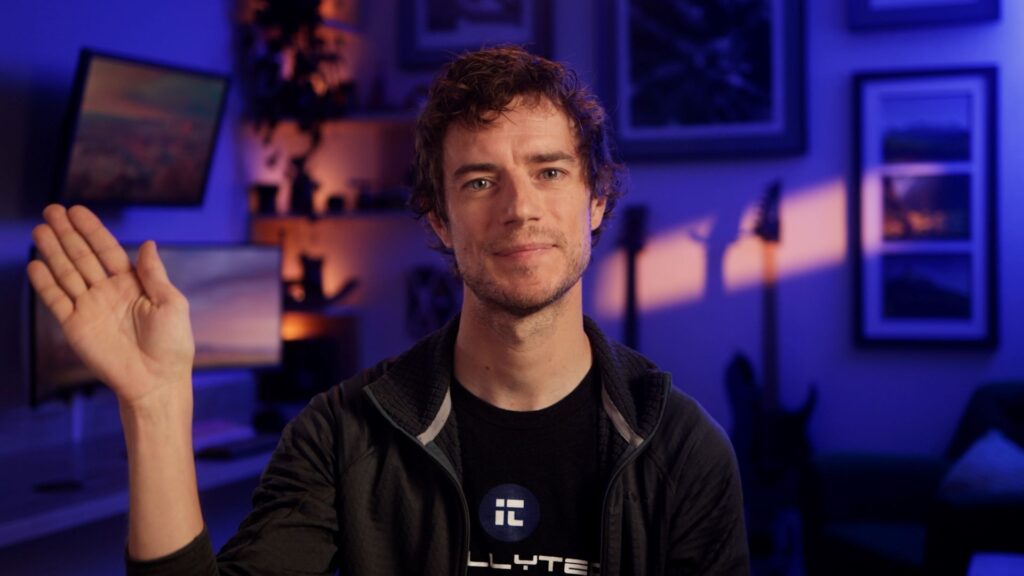commercial lighting breakdown – nerdio
commercial
client: nerdio agency: small hill films
dir/writer: AJ Campli dp: Bailey T. Miclette
1st ac: Dustin Wheeler 2nd ac: Riley Clinton
gaffer: Tyler Trepod key grip: Teej Morgan
pa: Deanna Schaekel color: Jonny Sirotek
VFX: Casey Webster
select frames
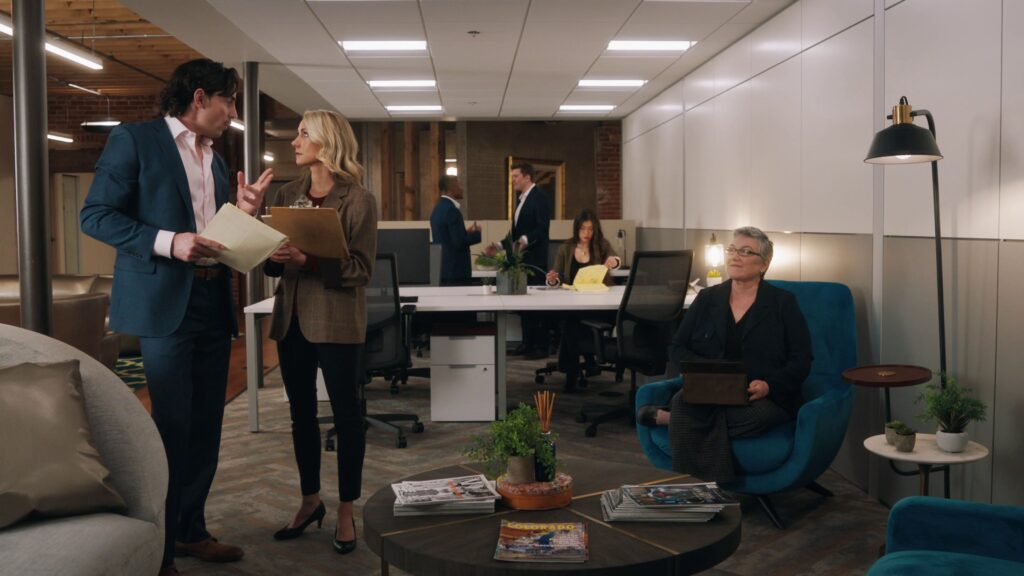
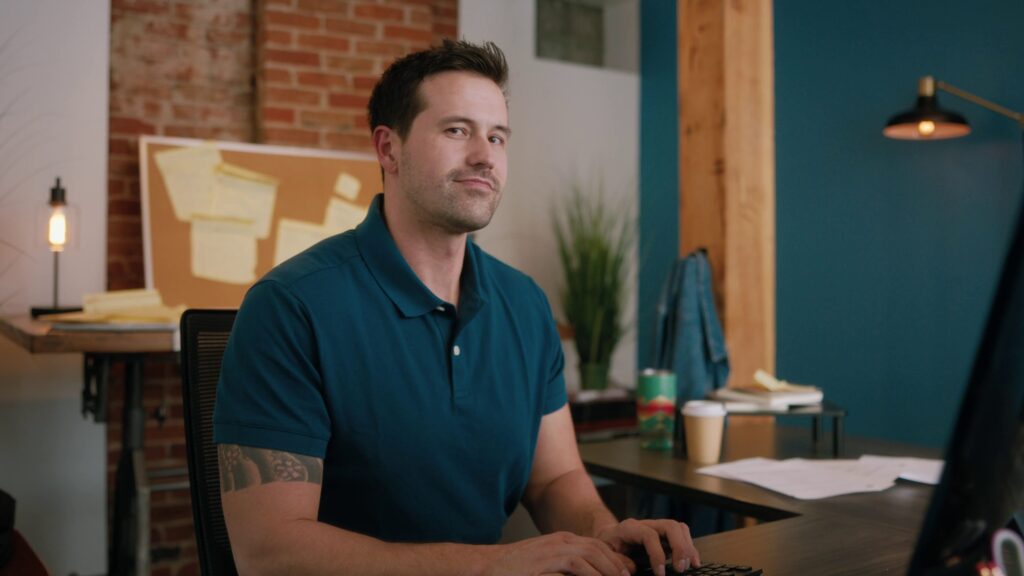
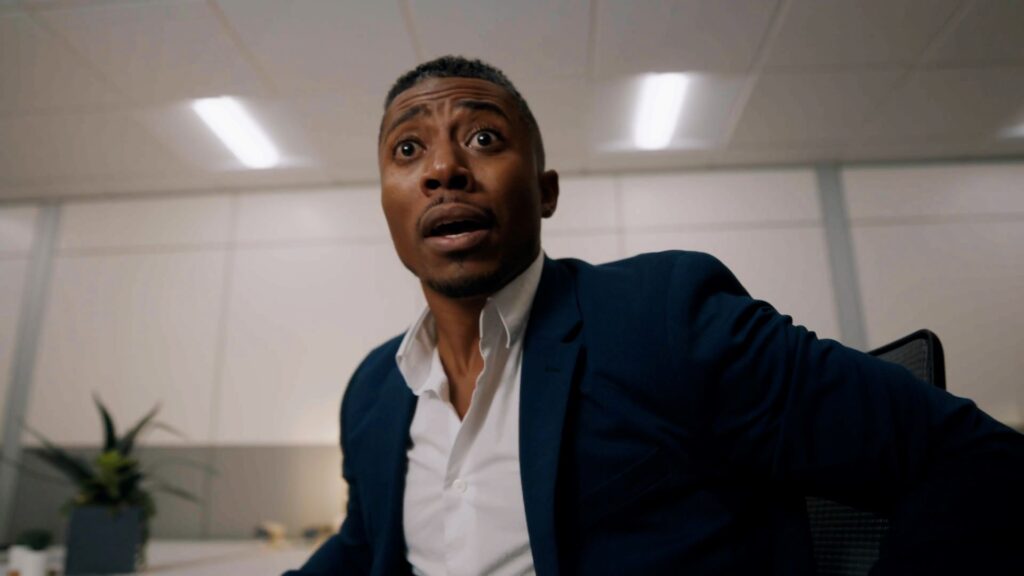
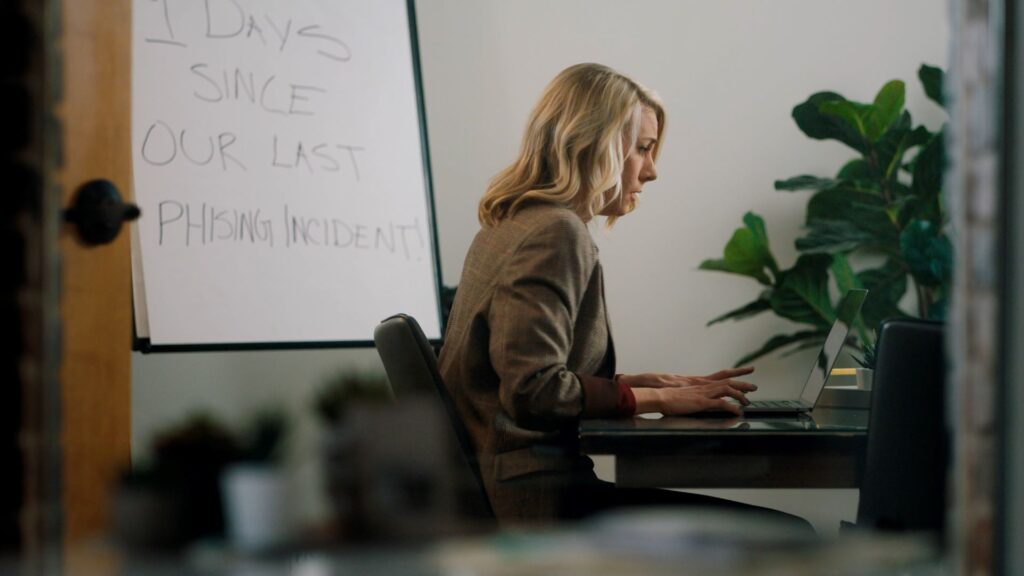
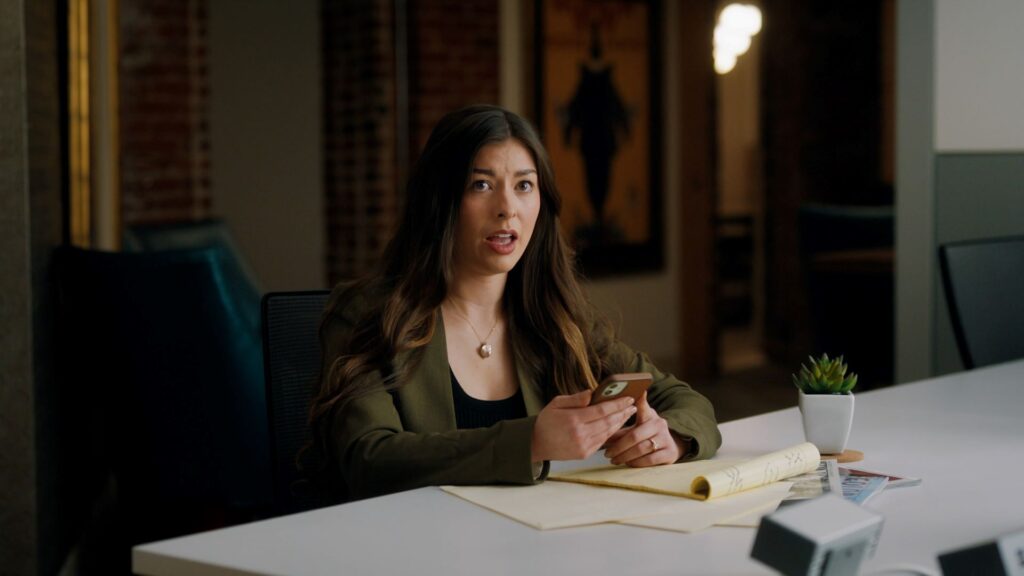
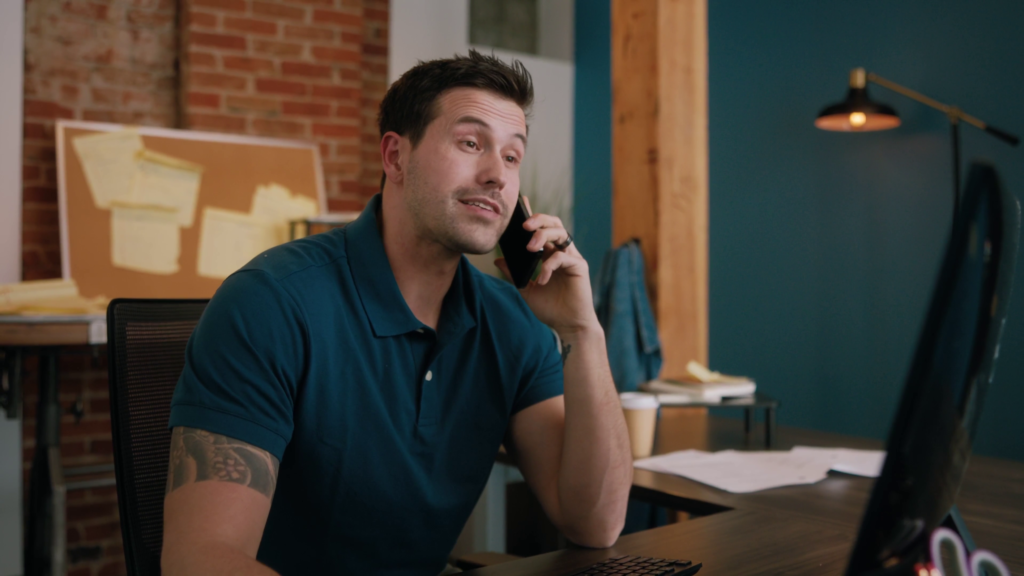
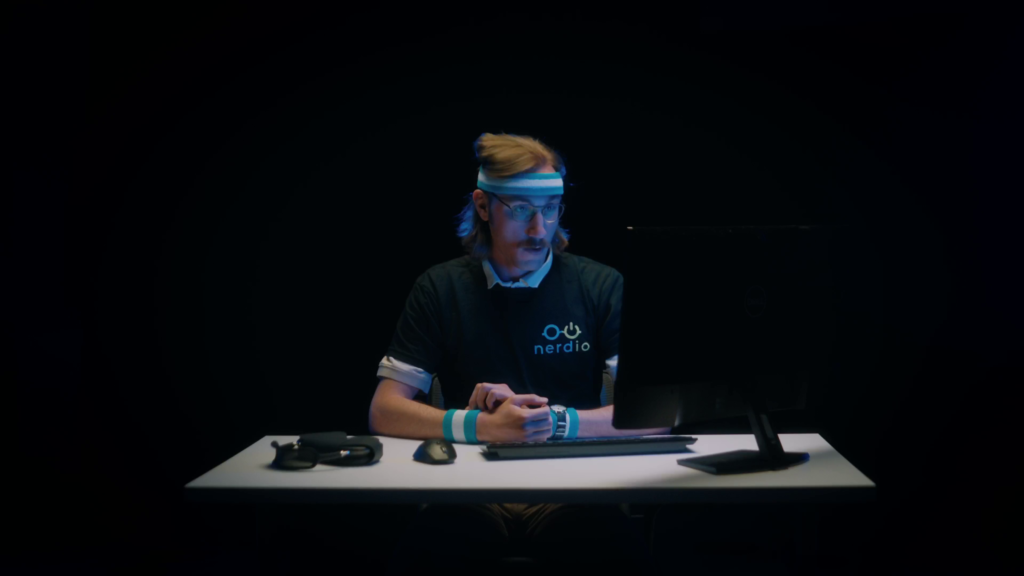
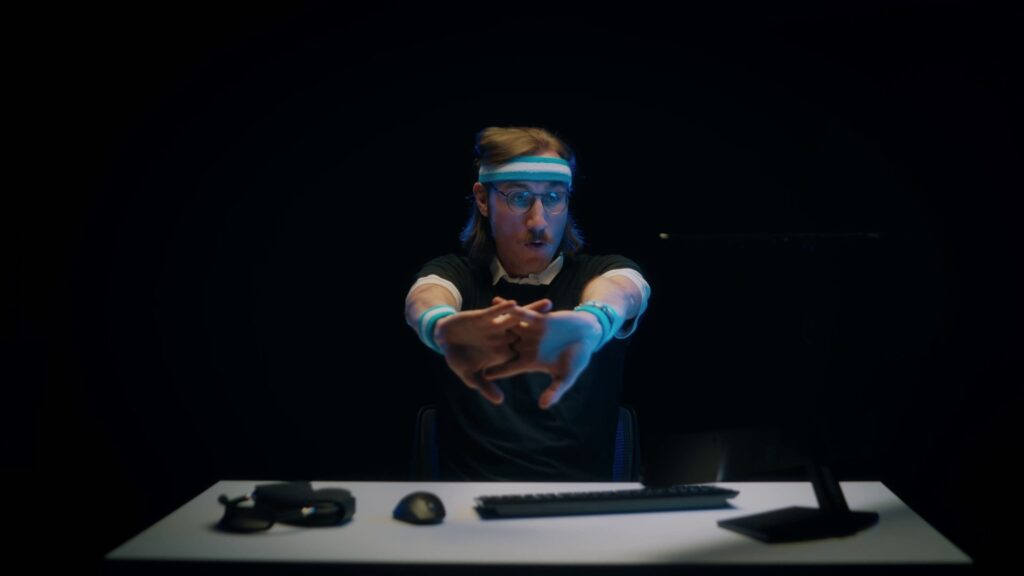
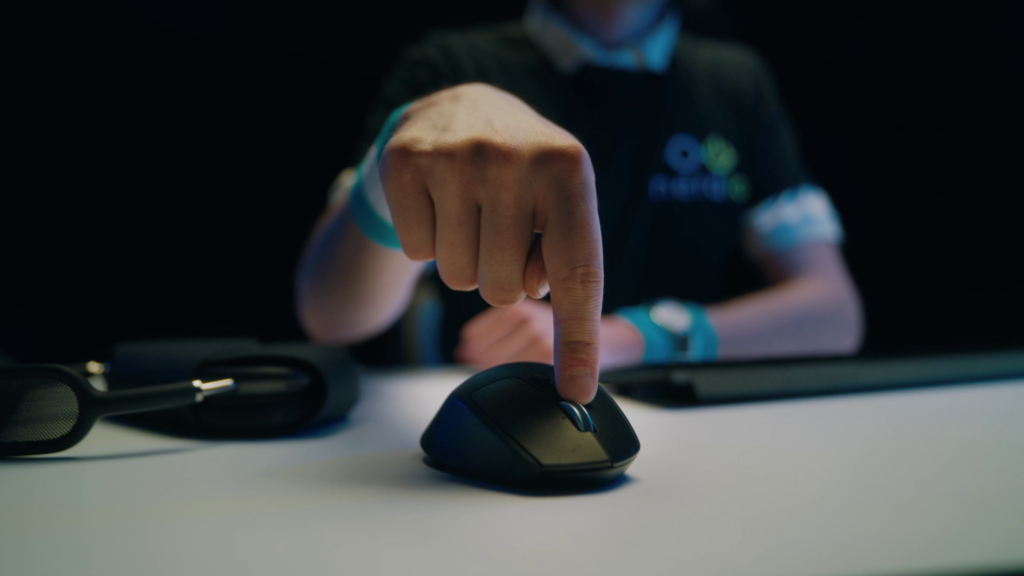
youtube video
Director AJ Campli and DP Bailey Miclette are repeating clients of mine, so I was thrilled when they called me to light this comedic IT commercial.
A quick pre-production phone call later, and I was in tune with their vision, had my equipment list, and was ready for set day!
Let’s walk through how I collaborated with the team to bring their vision to life.
room 1 breakdown
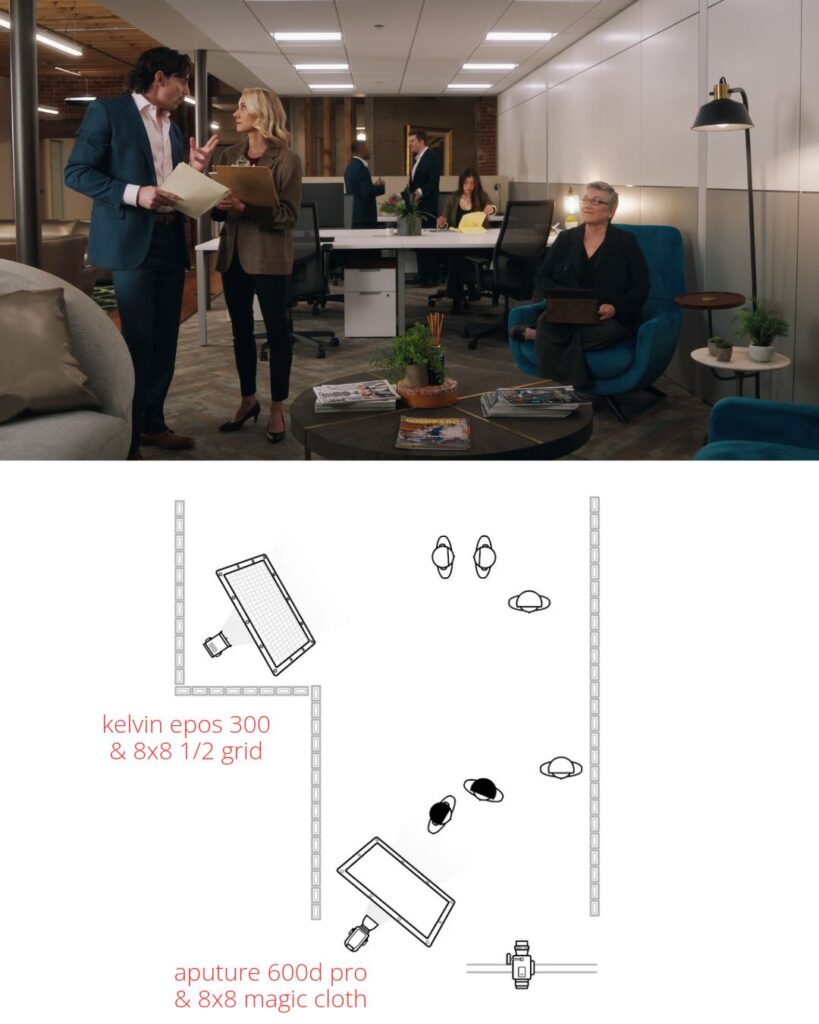
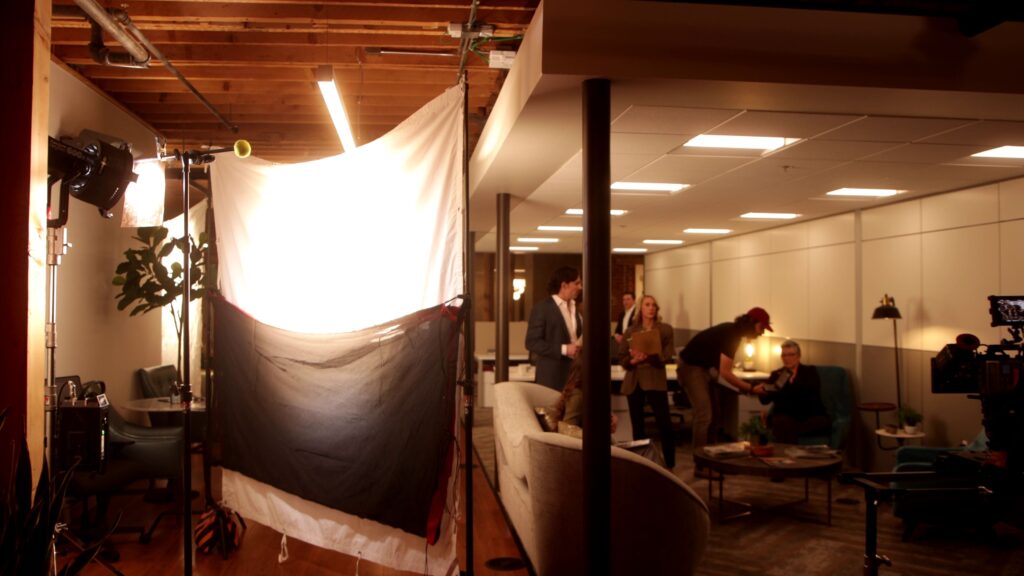
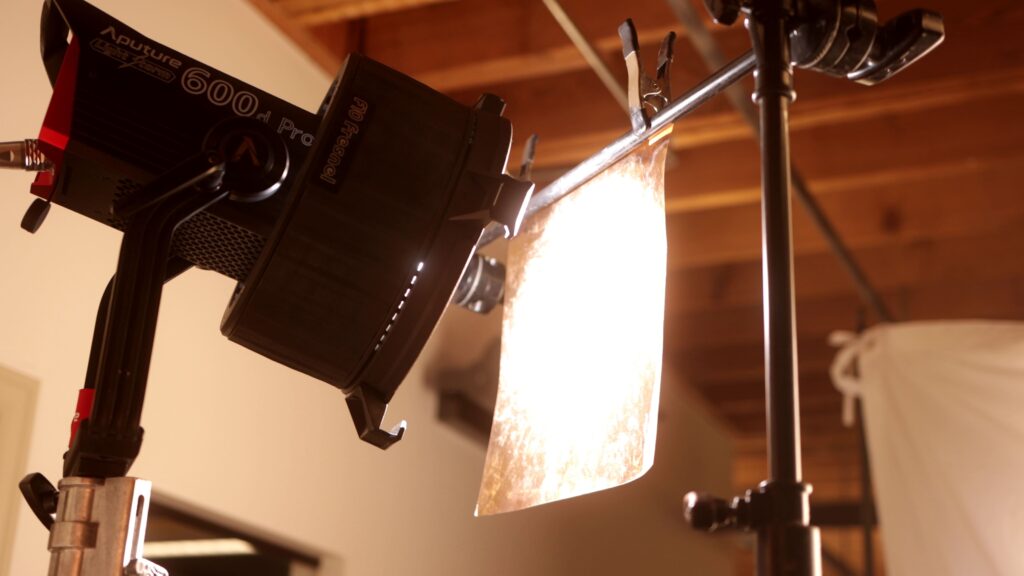
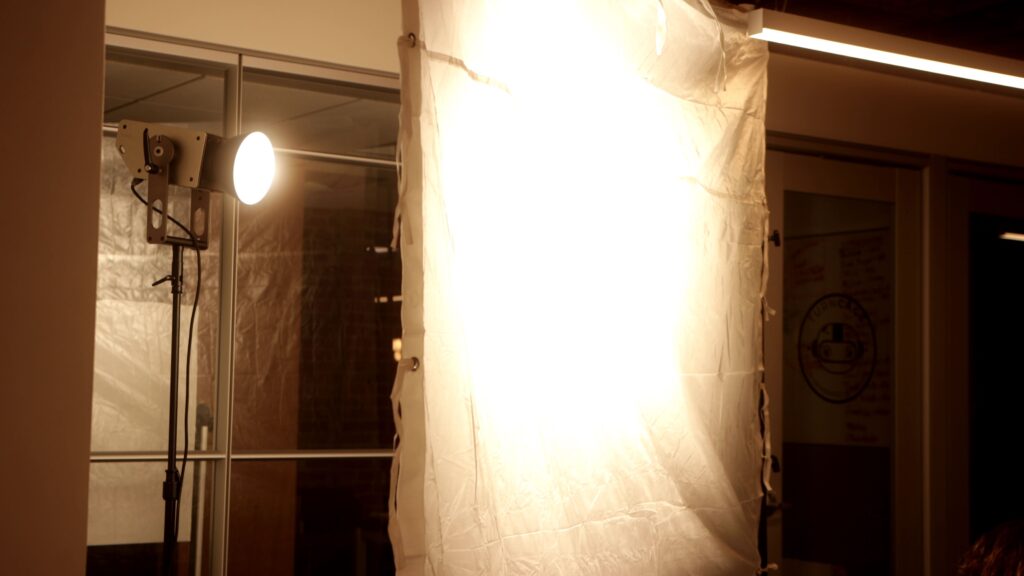
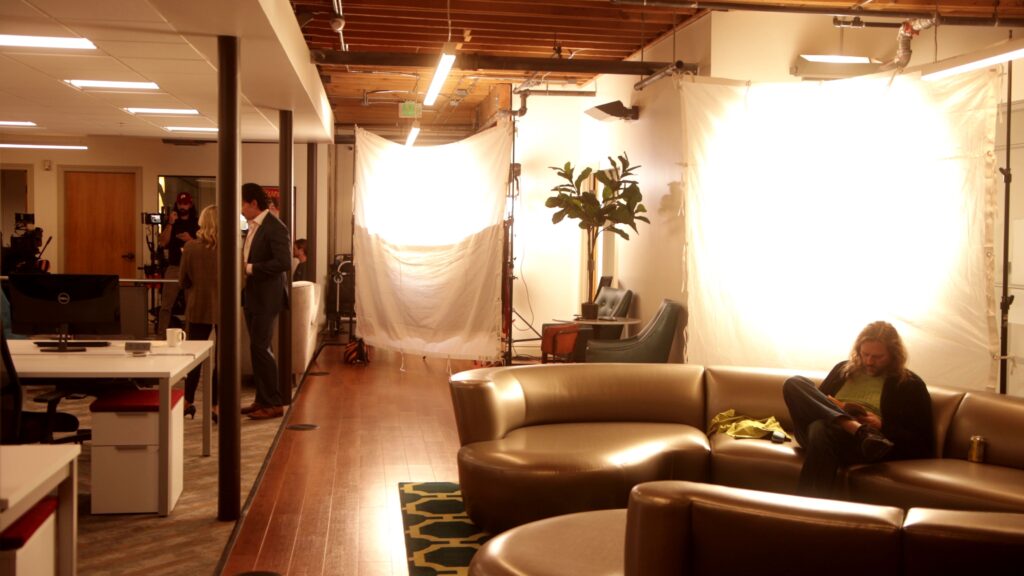
room 2 breakdown
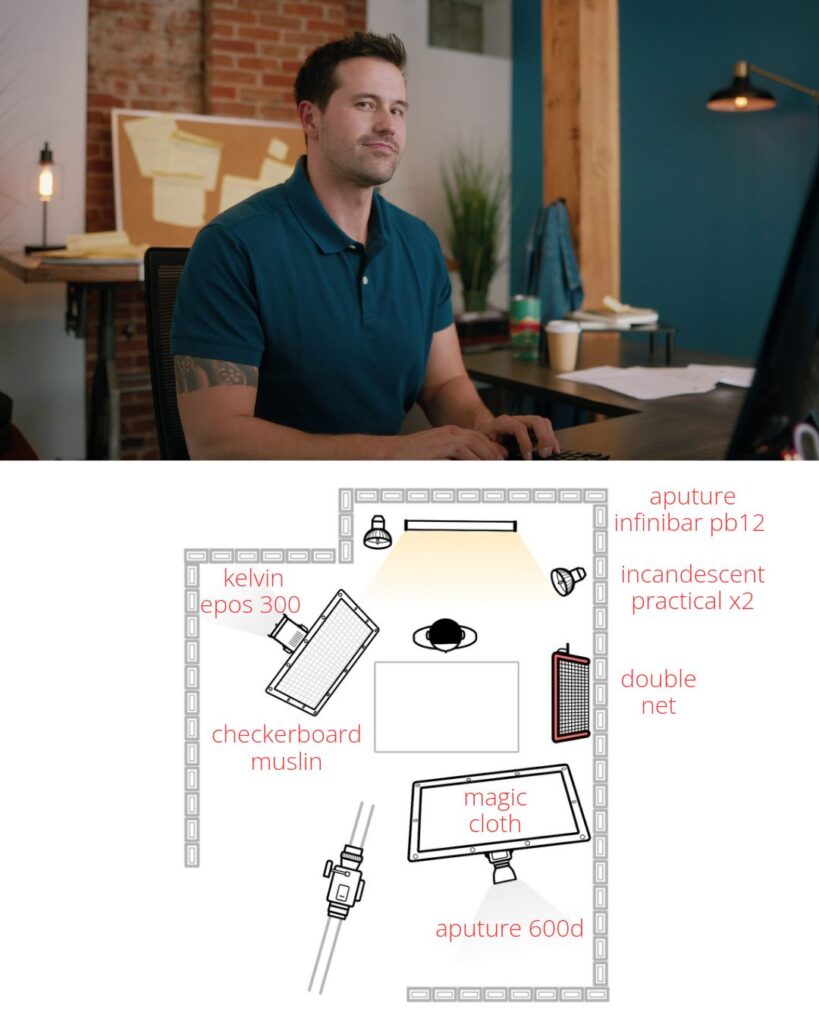
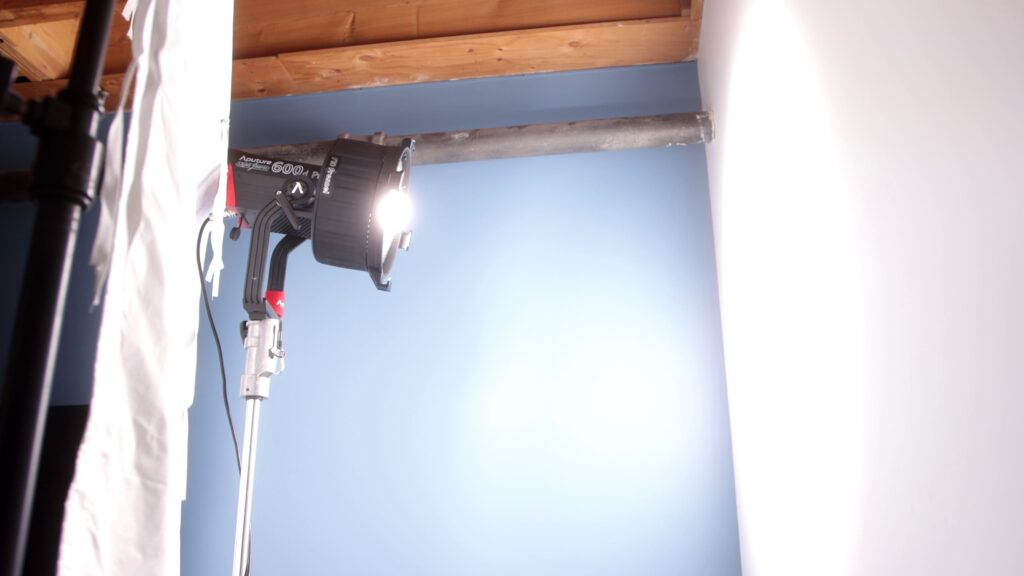
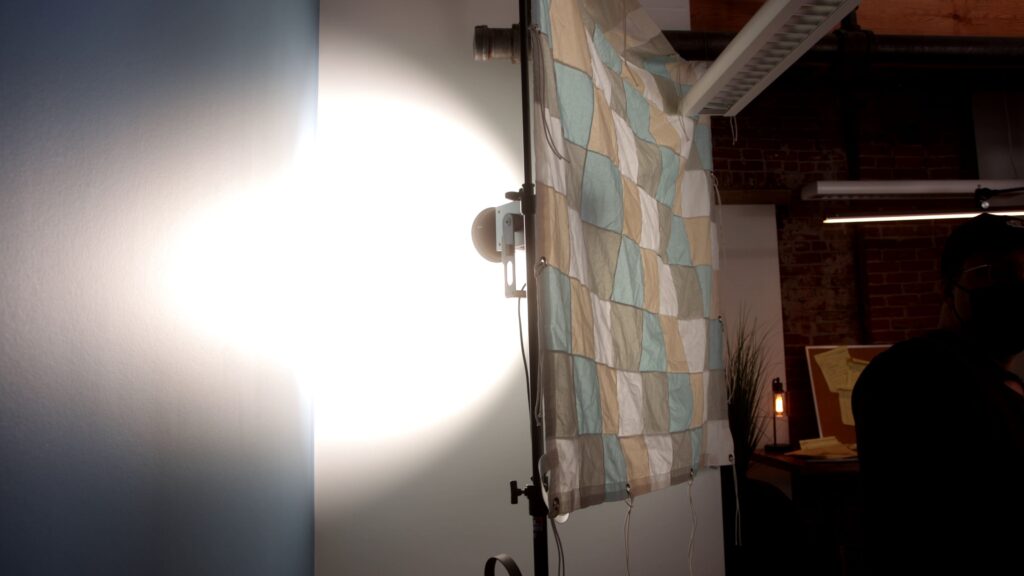
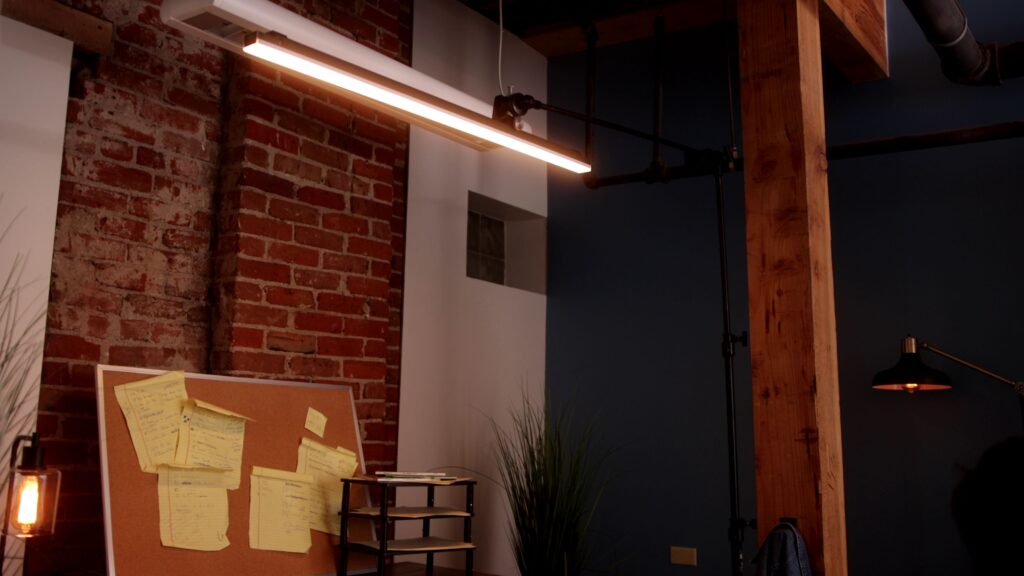
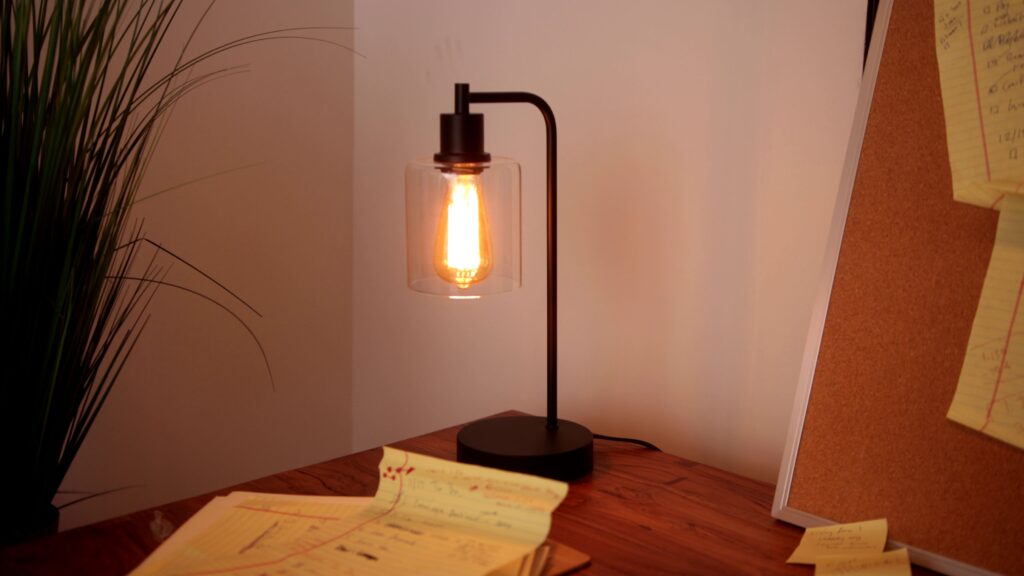
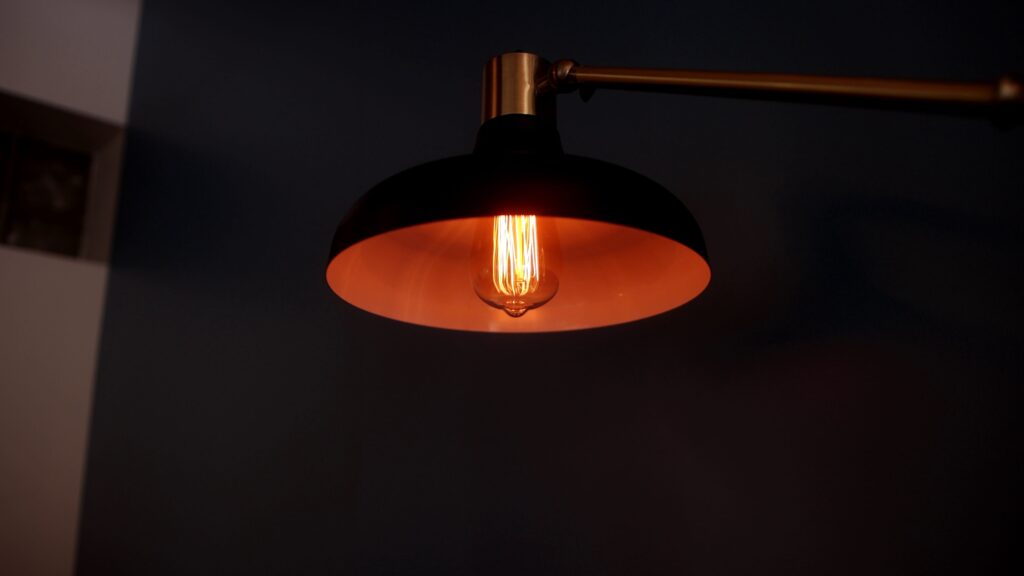
quick cuts breakdown



Let’s move onto the quick cut shots. These clips were all about careful positioning of the key light on our talent to avoid being seen in the camera whip. The setup time for these three scenes was also fairly minimal, so the lighting reflects that!
quick cut #1
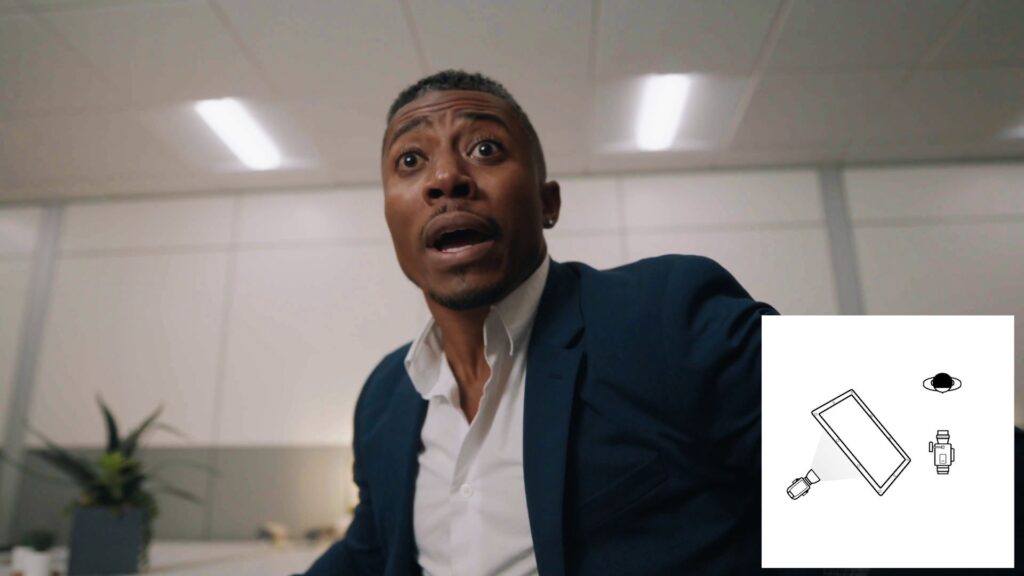
We filmed this shot right after our large office scene, so I re-positioned the Aputure 600d Pro, 8×8 magic cloth, and double net. These were placed as a far side key, or across our talents eye line from the camera. I placed the setup at a pretty typical 3/4 angle to give some shape to the face without being too dramatic with it. Positioning camera left also gave the DP room to whip pan camera right.
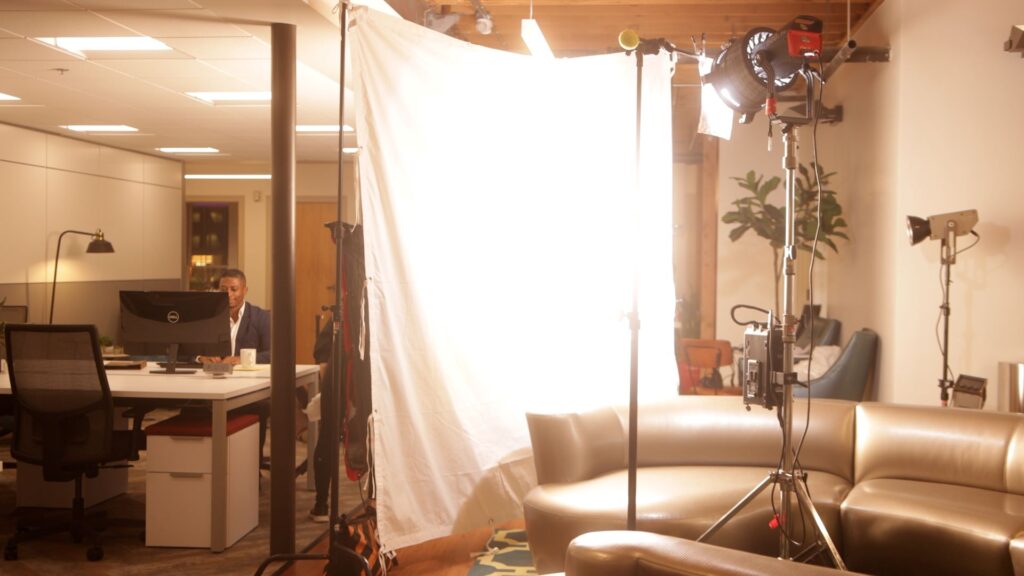
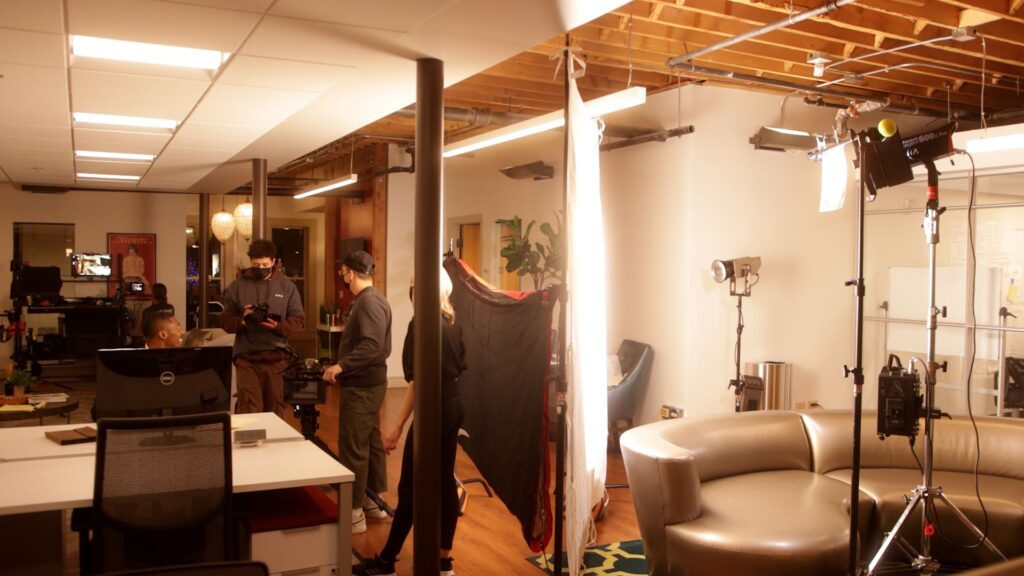
Since we were looking up at our talent, there wouldn’t be any room to hide lighting behind him in frame, so I went with available lighting again to fill out the rest of the frame.
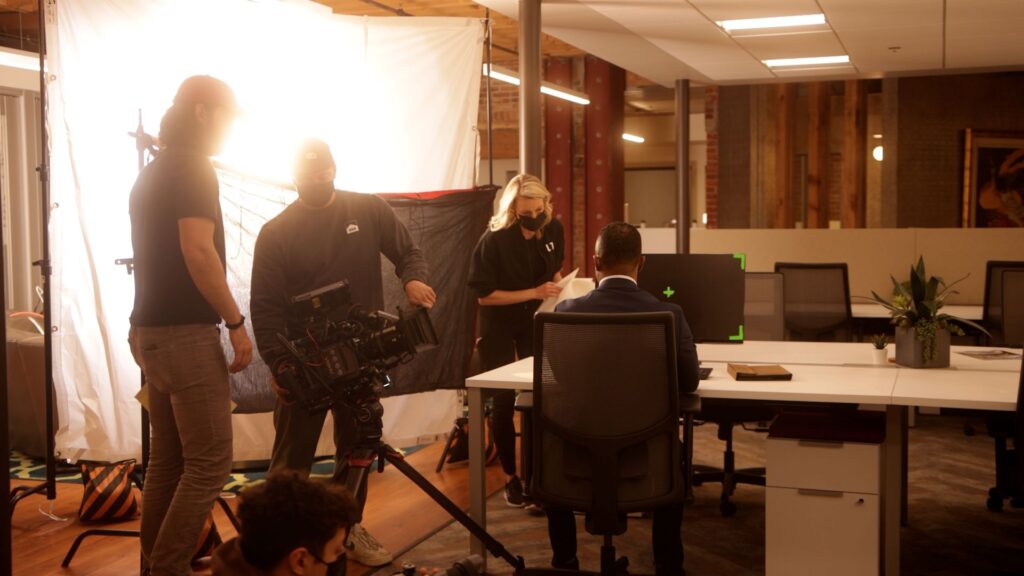
The green tape that you can see here on the monitor is for the VFX work that needed to be done in post. The tape gives the graphic artist a triangulated plane so they can add in the monitor replacement!
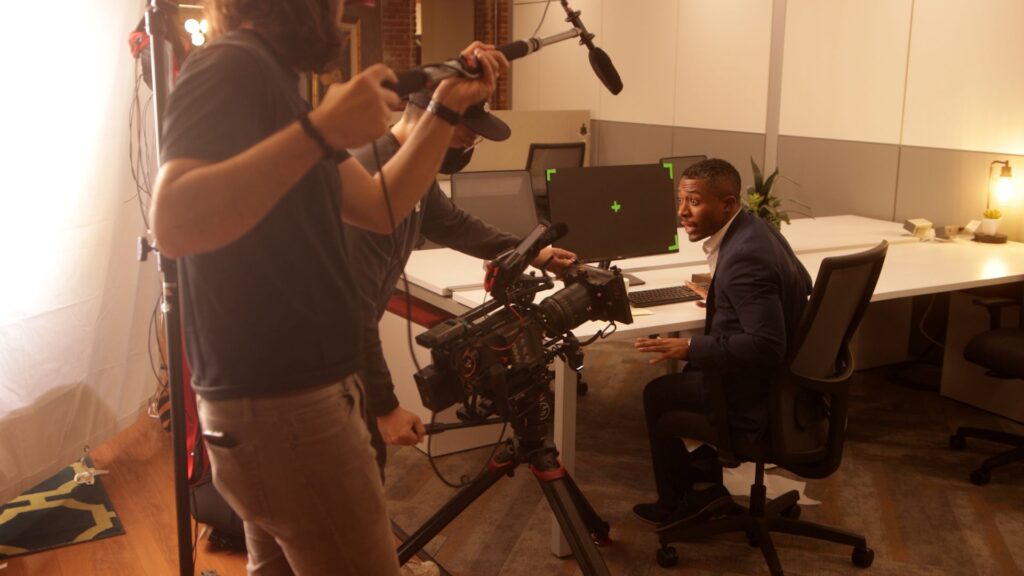
quick cut #2
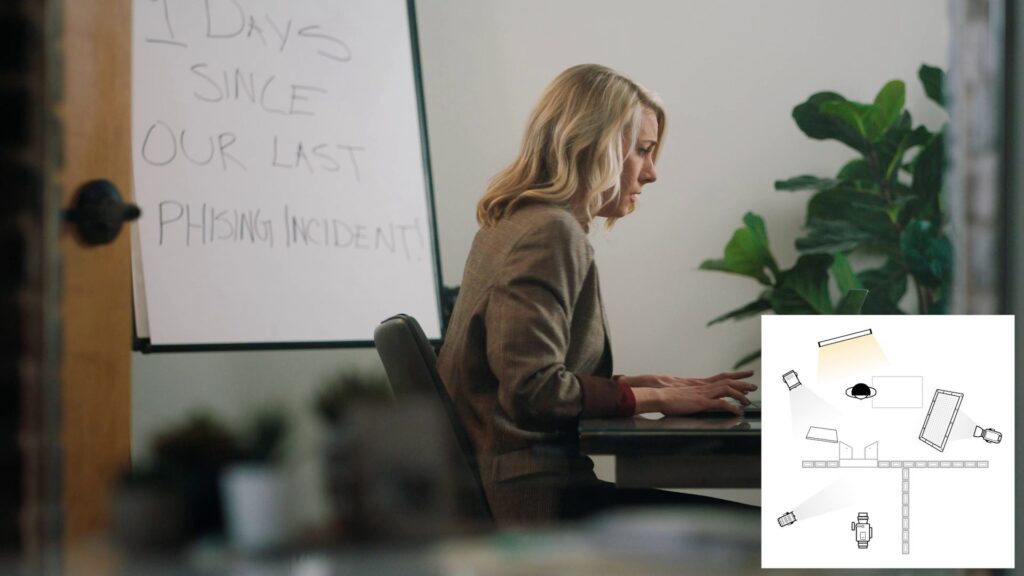
The DP wanted the eye line of this shot to be opposite the last one so we weren’t looking the same way for all 3 of these shots. So, the 600d and checkerboard muslin were positioned on the far side of the talent to act as the key light.
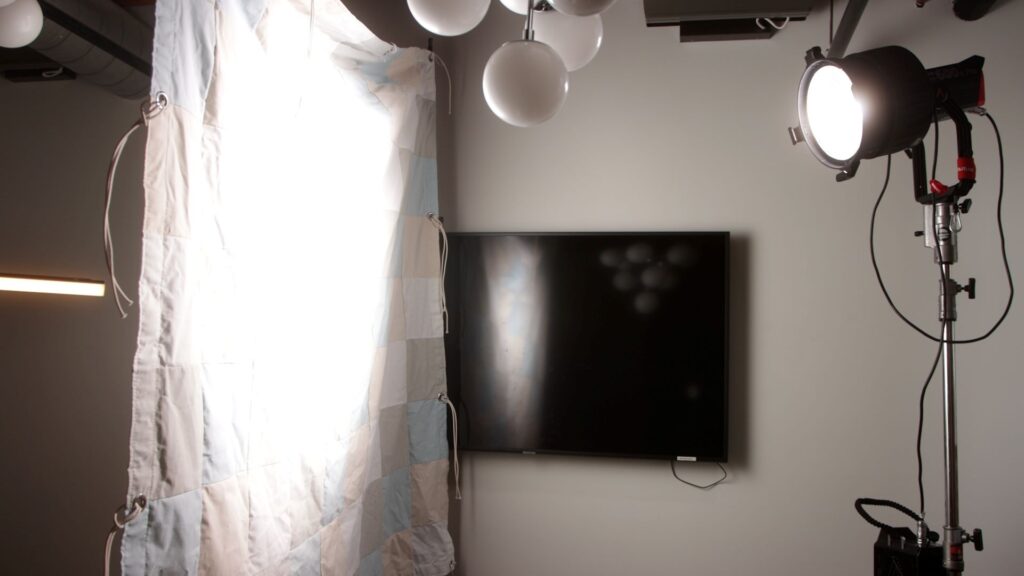
But, this placement also meant the camera whip would have looked directly at the key. In order to solve this issue, the camera was positioned outside the room, behind a little window. An Aputure 60x helped keep that outside wall from being too dark.
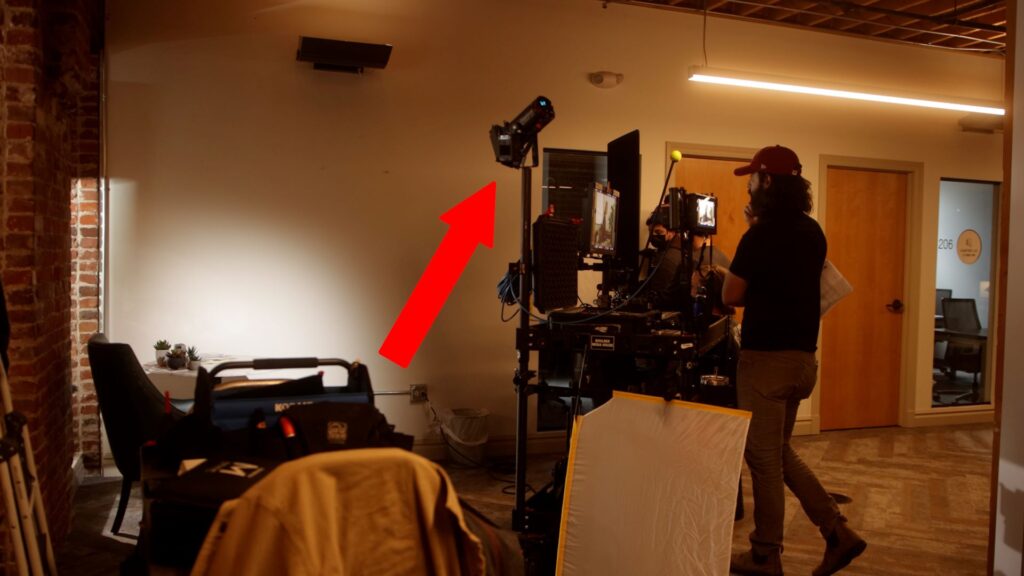
Back inside the room, an Aputure Infinibar PB12 positioned behind the talent gives her some separation from the background.
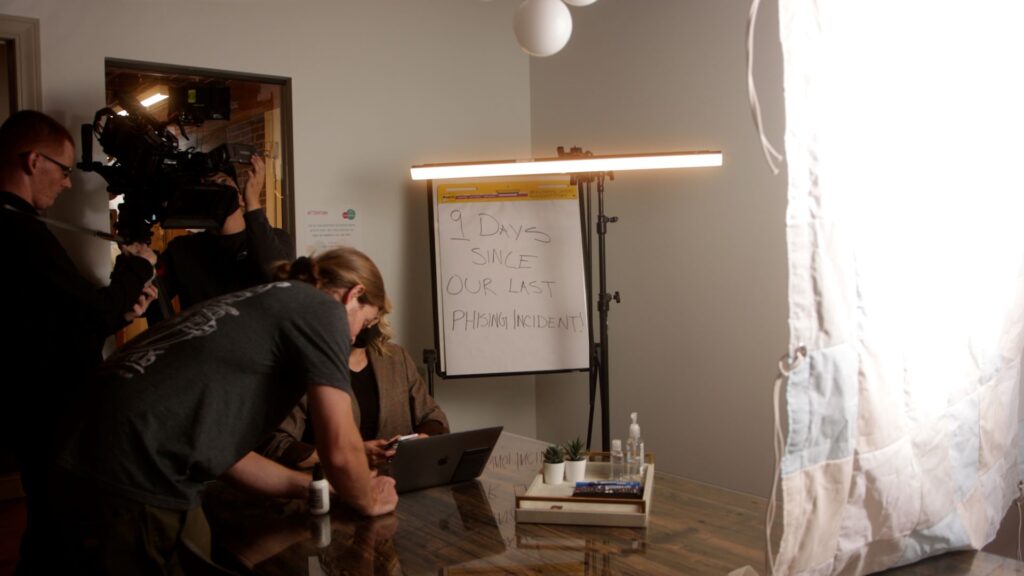
A Kelvin EPOS 300 bounced into a 2×4 beadboard gives us the fill we were looking for while staying off camera. The beadboard was put into place using a quacker clamp, platypus, duckbill, oinky boink, whatever they’re called where you’re from!
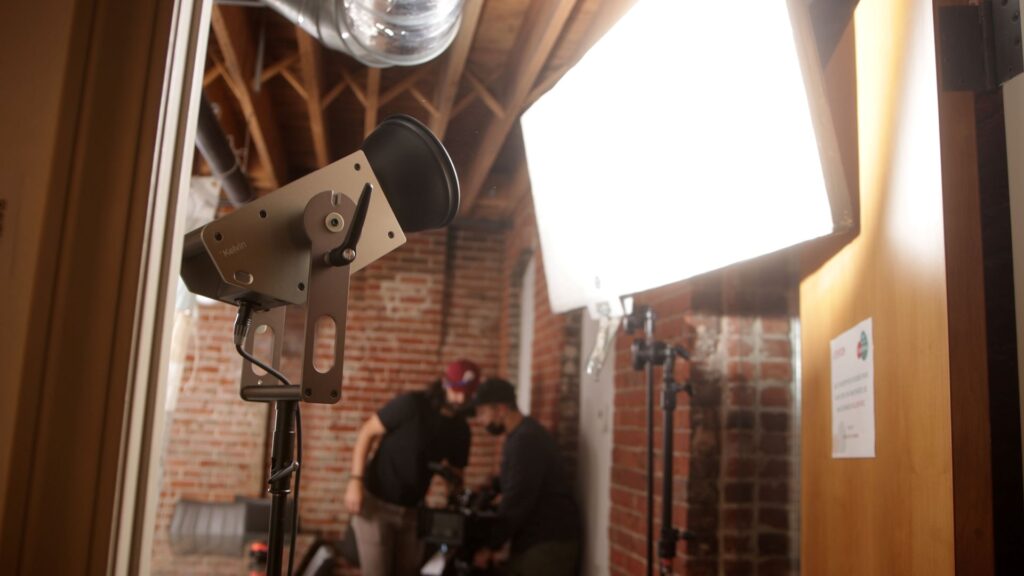
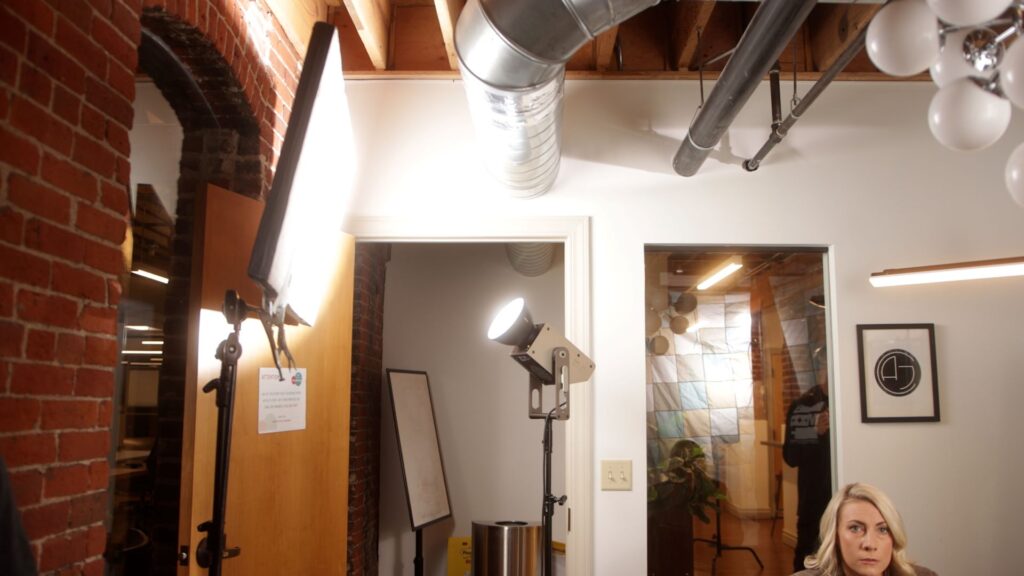
quick cut #3
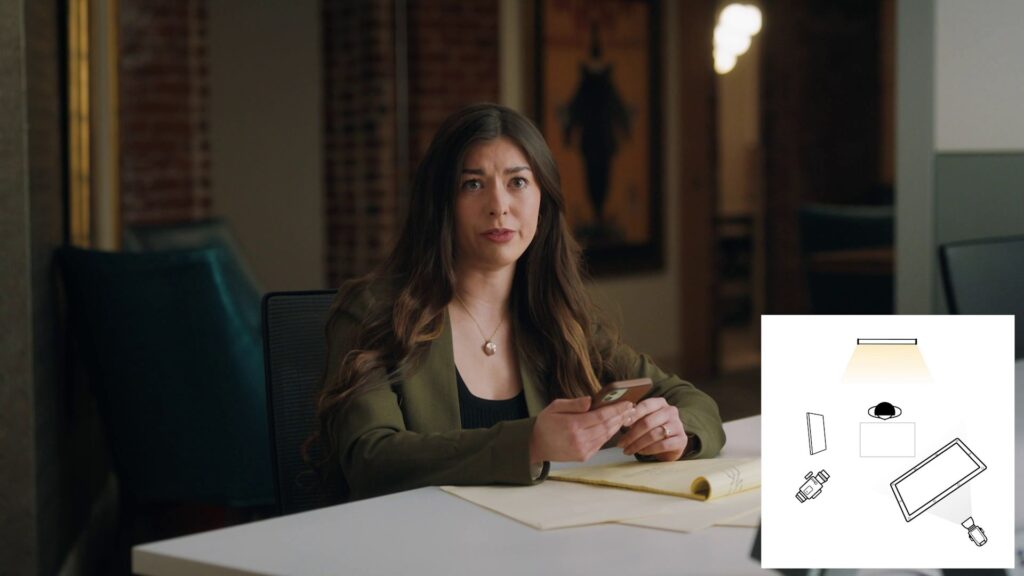
Onto the last of our quick setups – the key light here was an Aputure 600d Pro with the same CTO gel setup as before going through an 8×8 magic cloth on the far side of our talent. I didn’t even need the double net to slow down the desk since the cut happens before it would be seen!
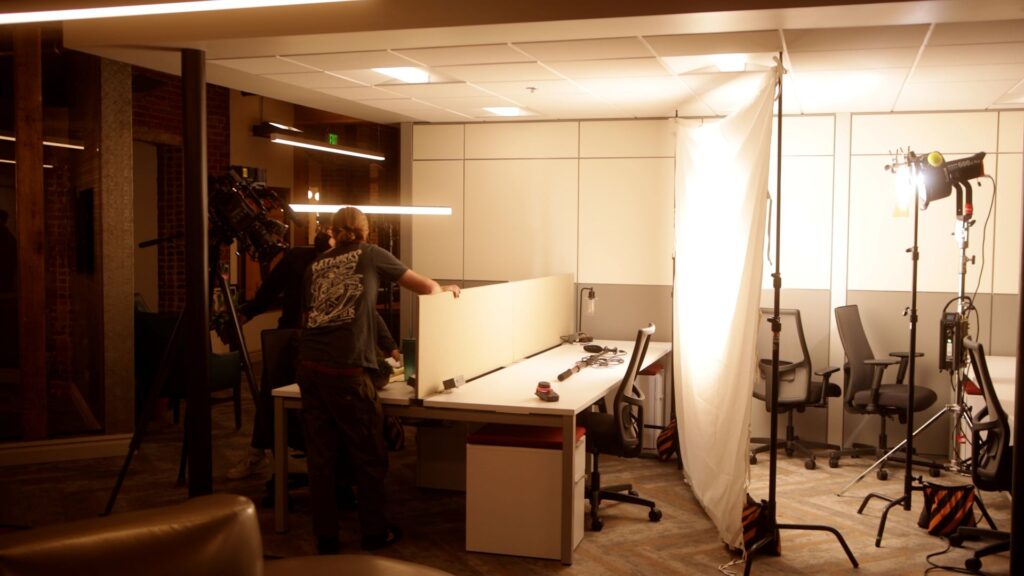
An Aputure Infinibar PB12 serves as a hair light, adding separation to the talent yet again!
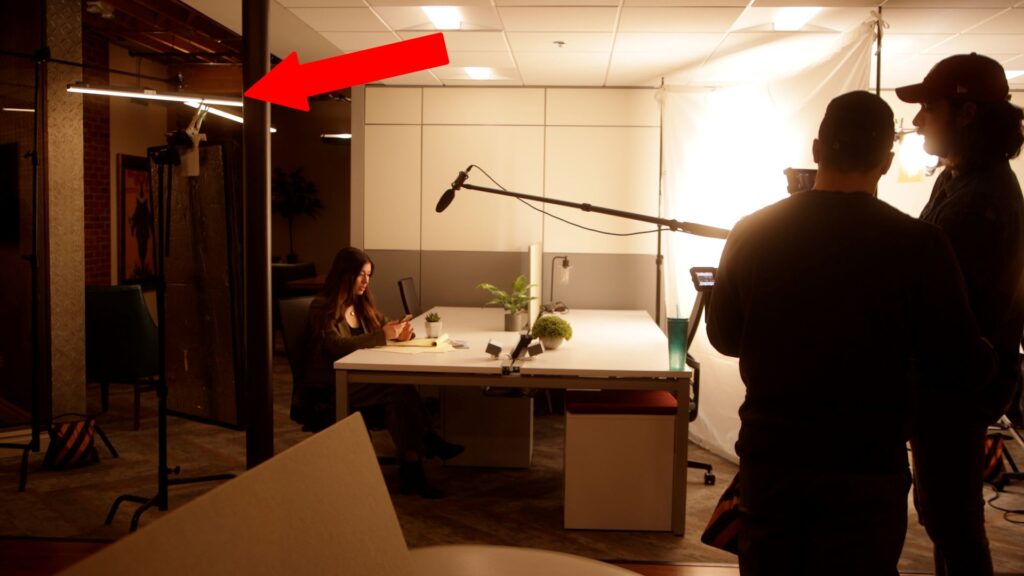
And that same bead board from before is still controlling the amount of shadow side fill. Only this time it’s affecting the ratio by bouncing the key back into our talent rather than re-directing a second light source.
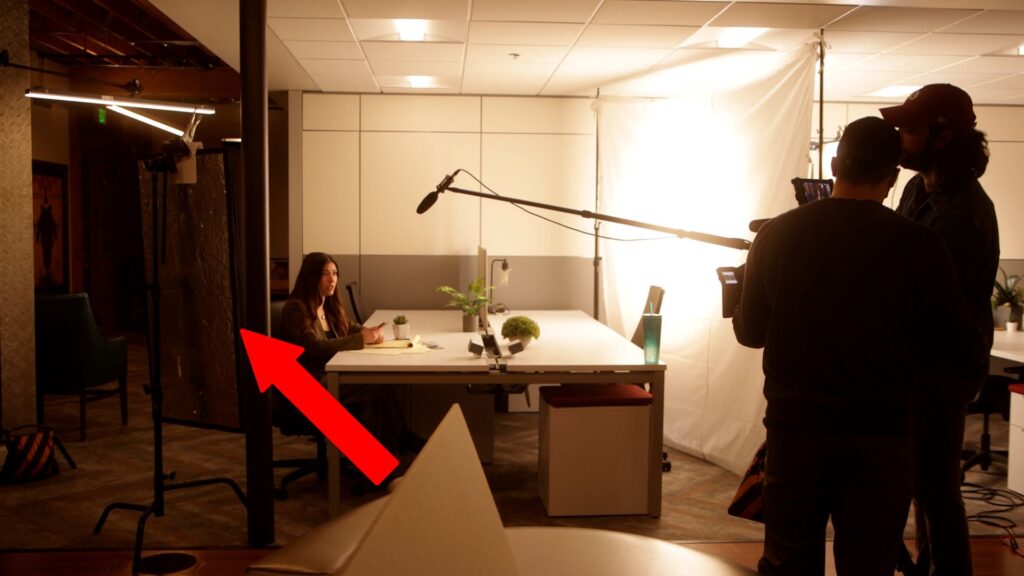
That does it for the quick cuts! A big soft key positioned far side, some separation between the talent and background when possible, and some quality acting!
room 3 breakdown
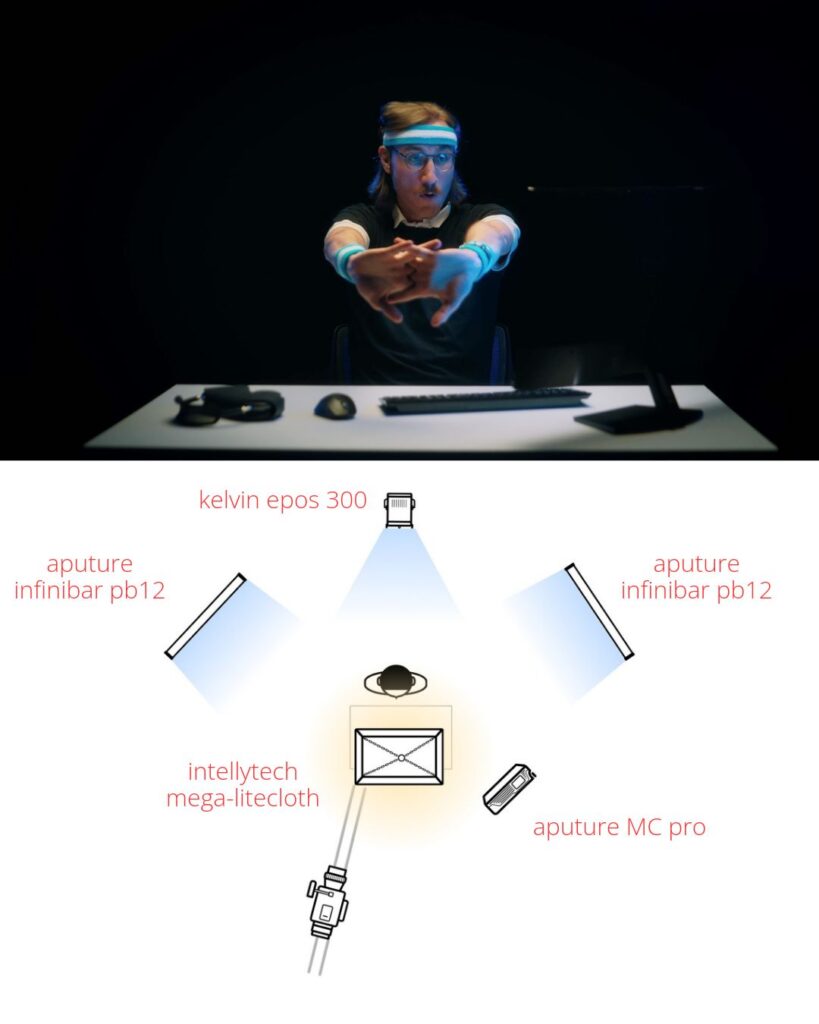
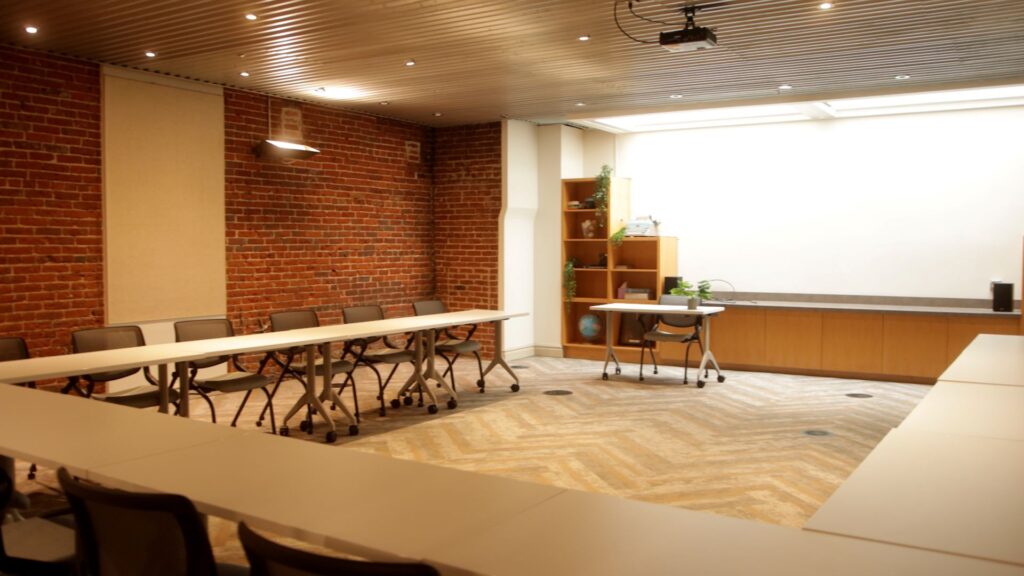
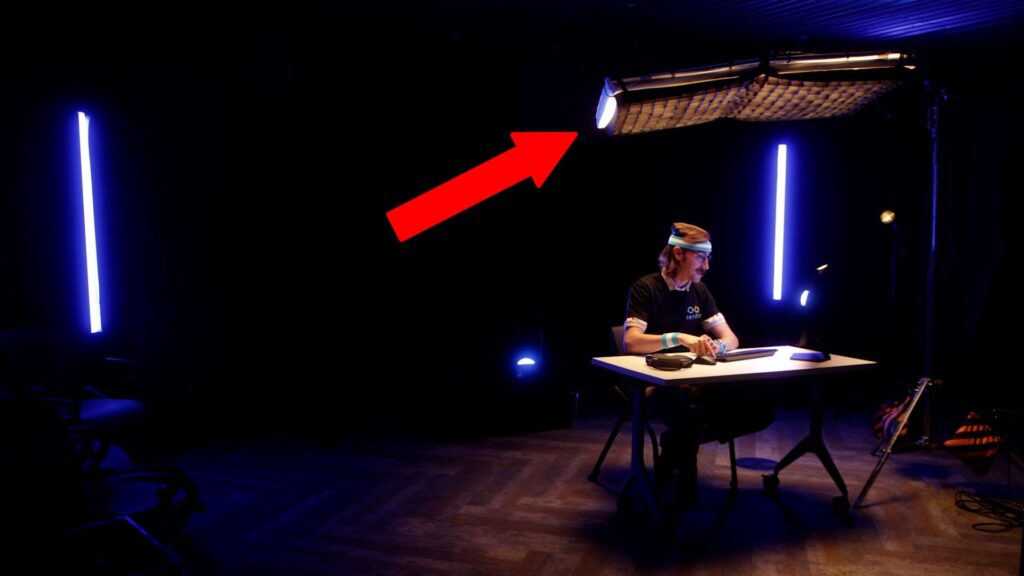
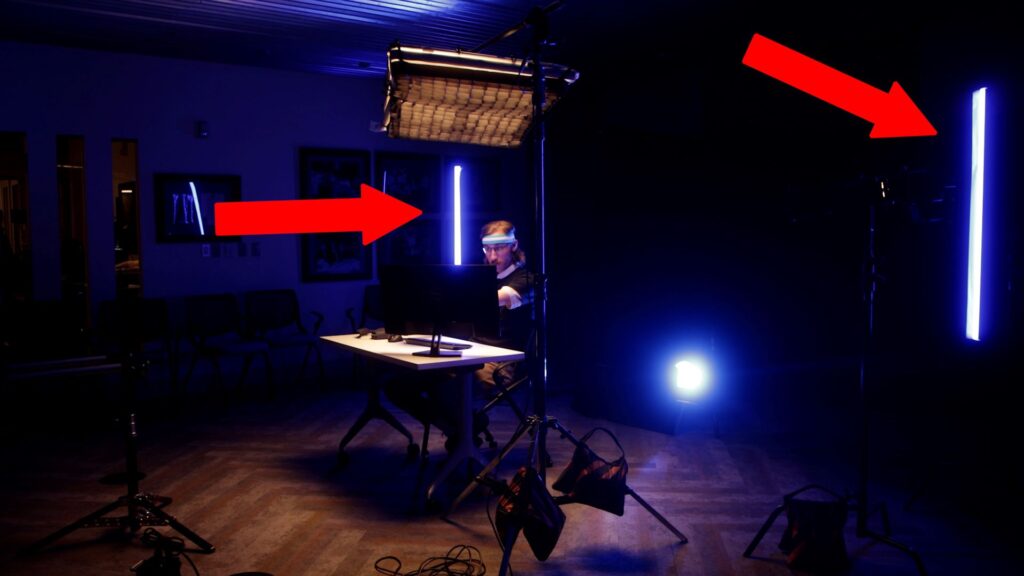
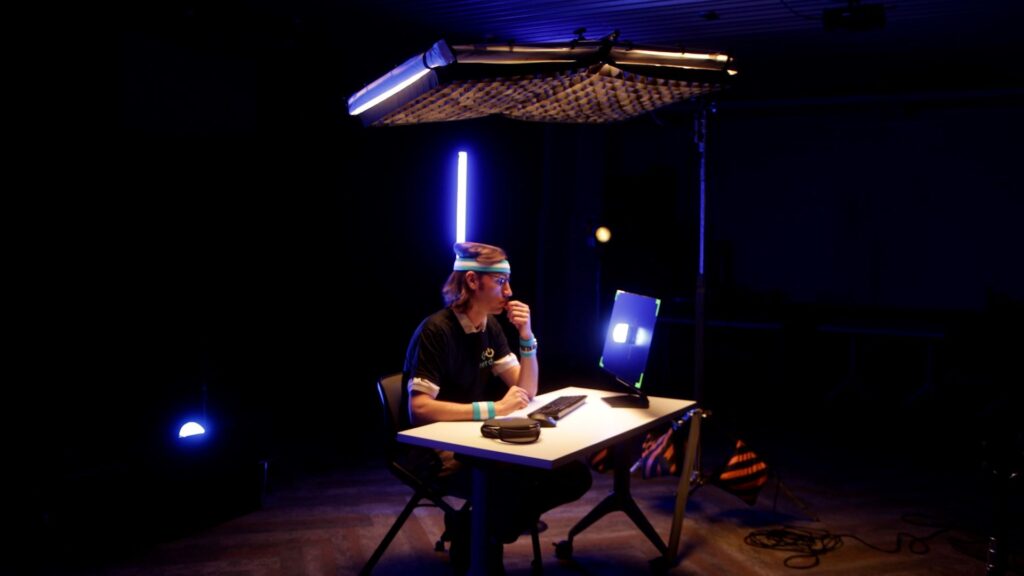
outro
